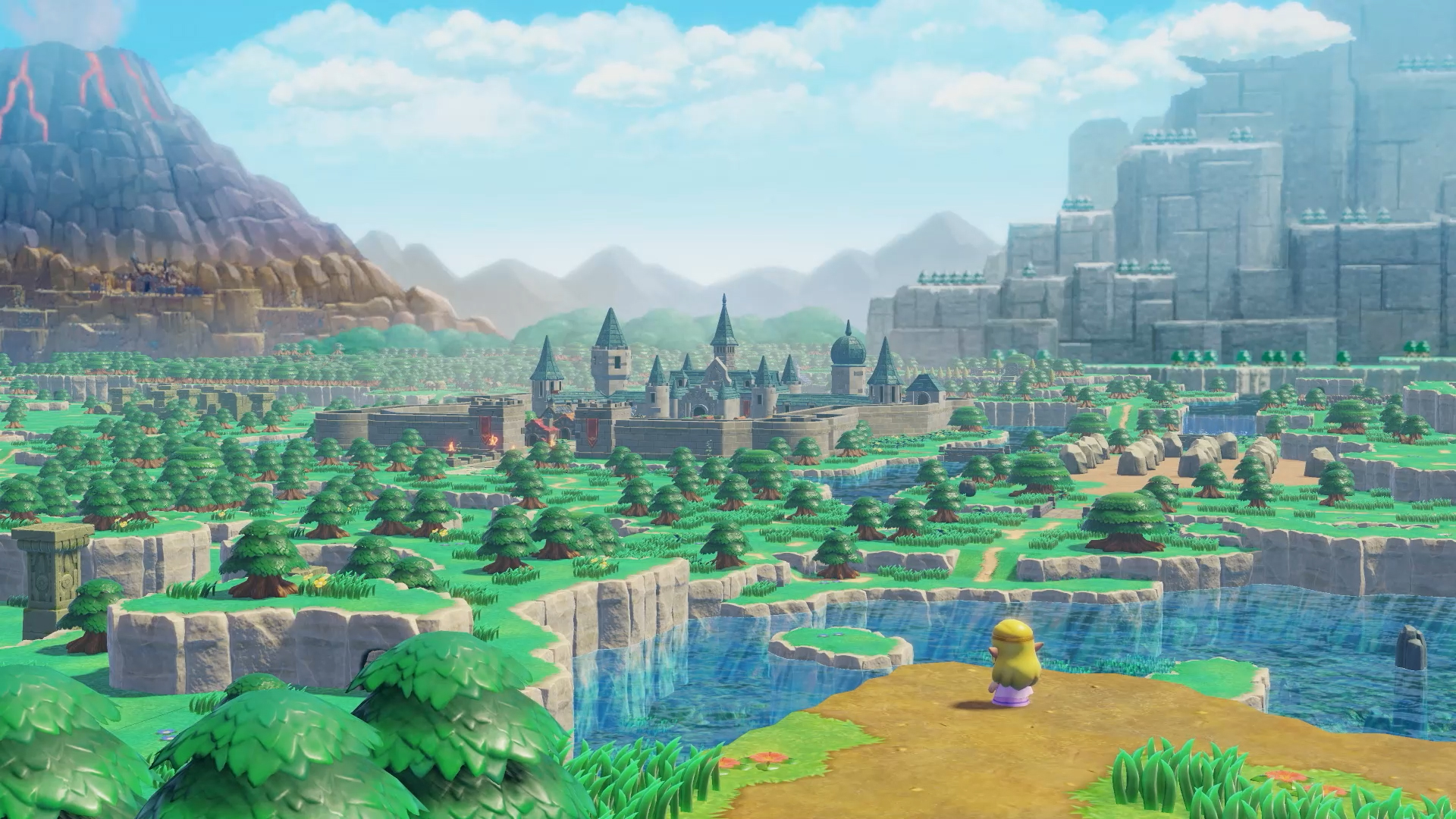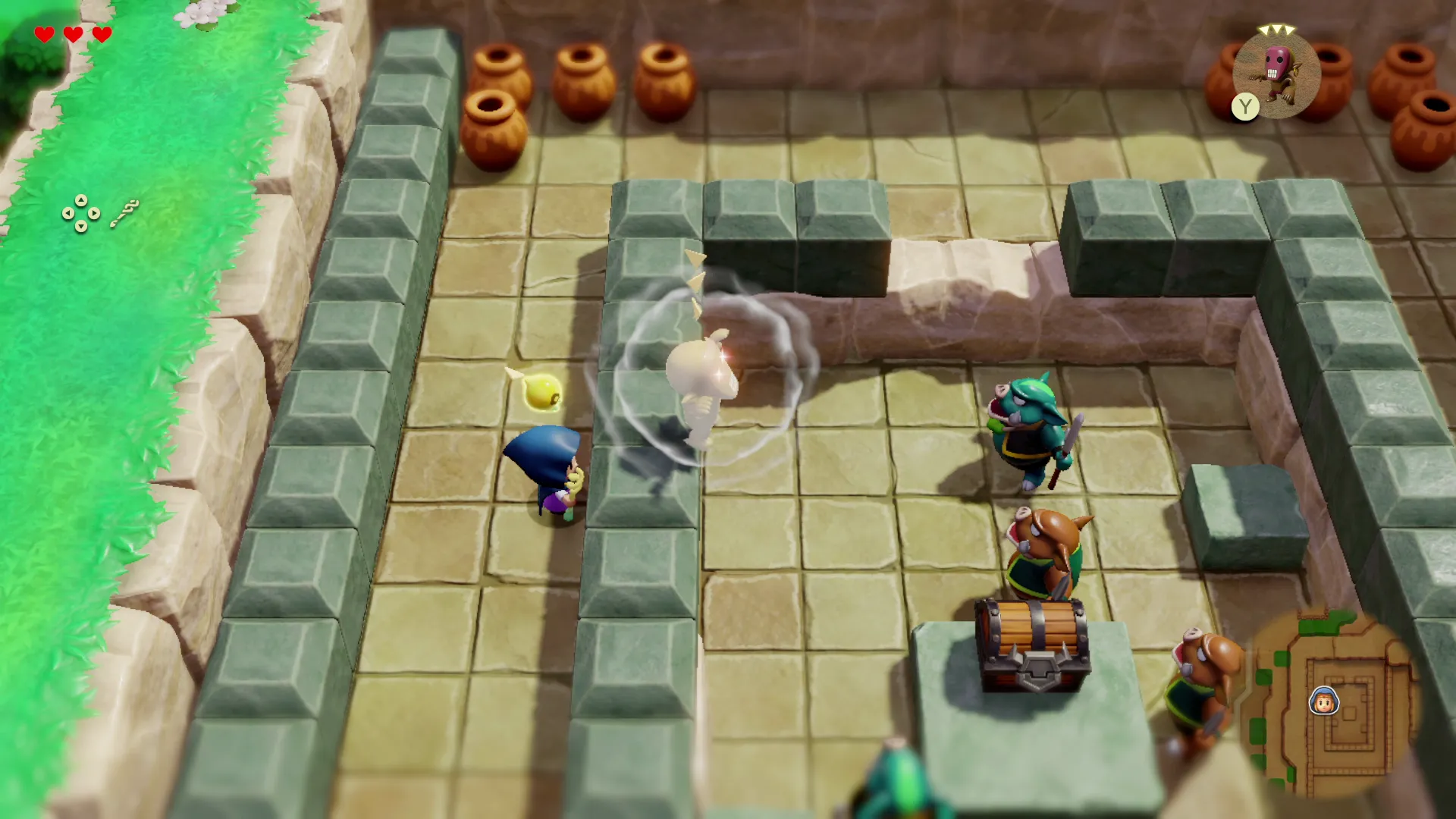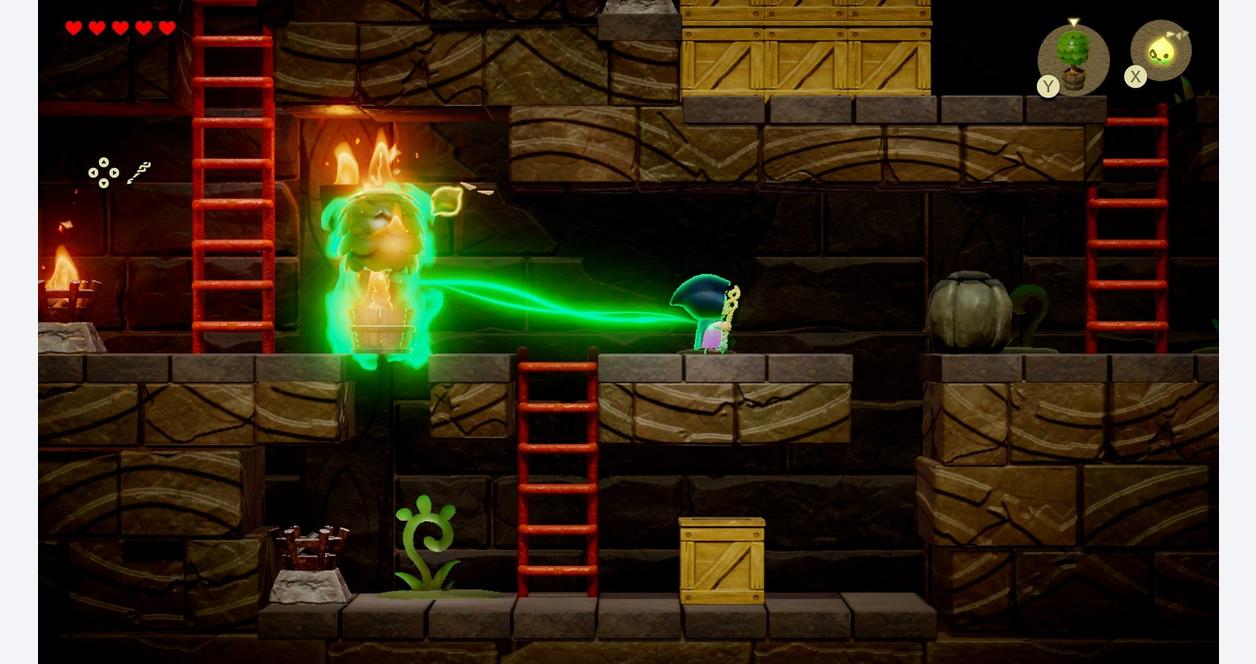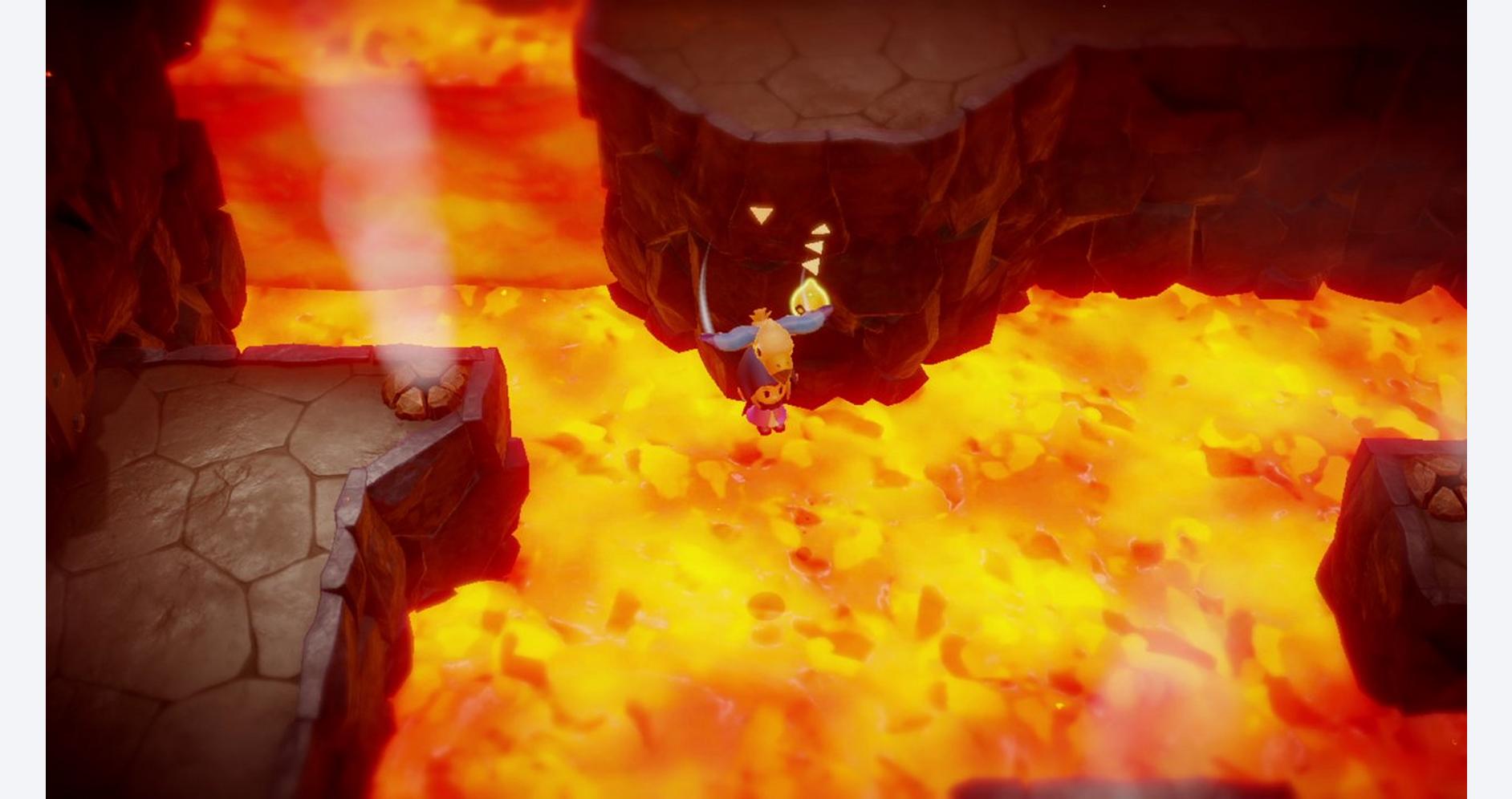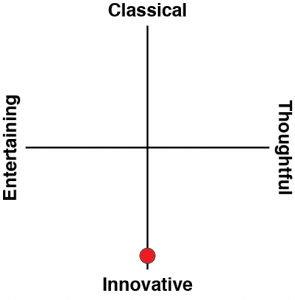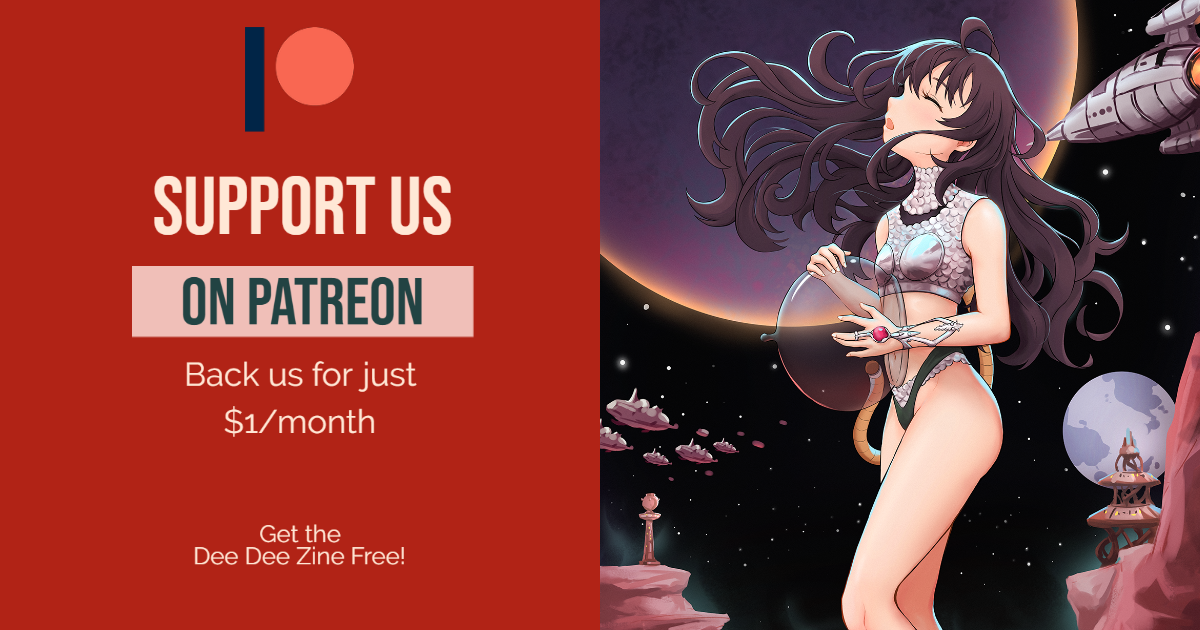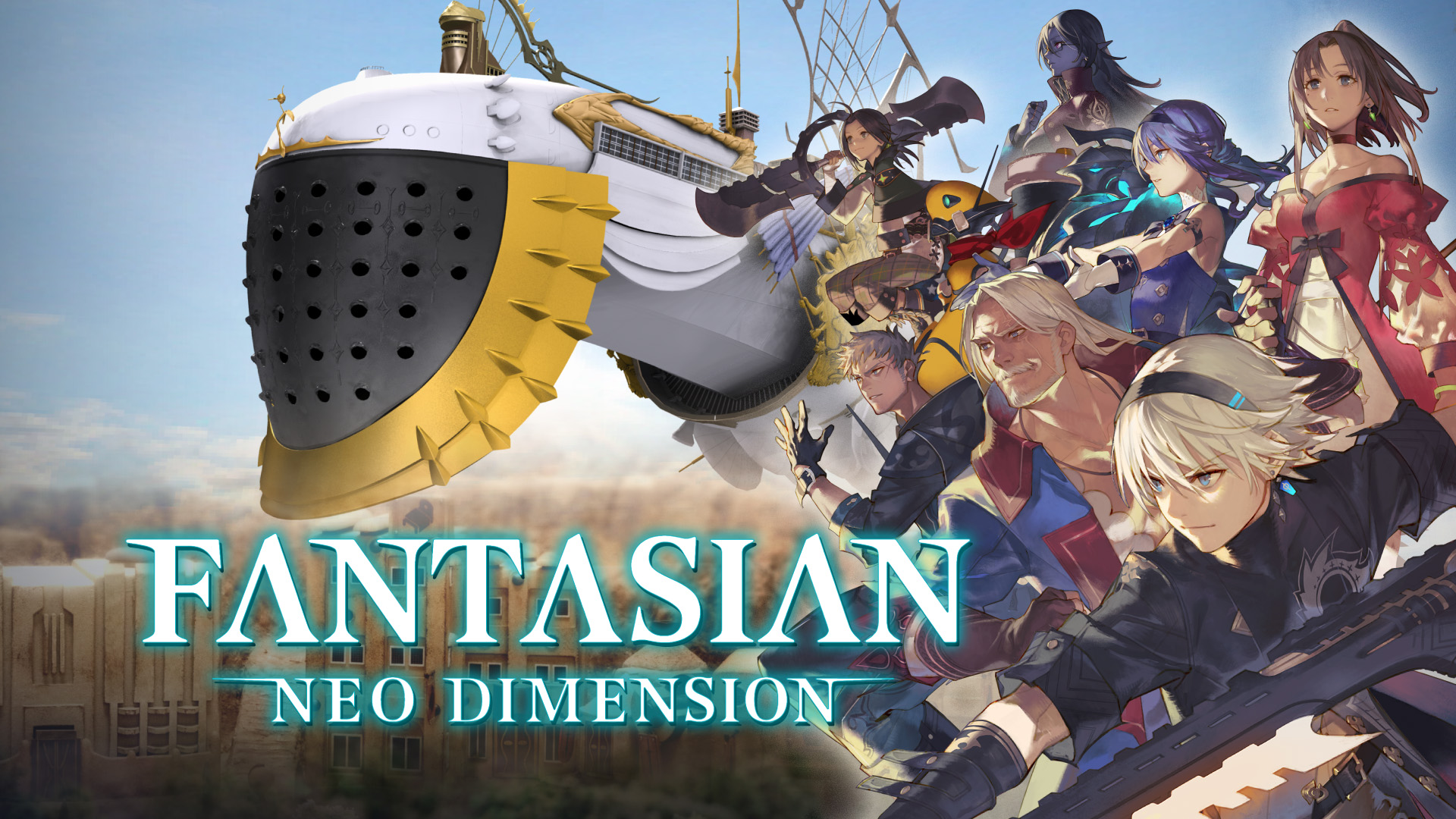They really should have called this “The Legend of Link”, to keep up with the series syntax. That aside, Nintendo’s first significant effort to make their good princess (sorry, I never cared for Peach) a protagonist is an absolutely delightful experience, and shows that while Nintendo enjoyed massive success with Breath of the Wild and its sequel, they haven’t lost sight of the traditional side of the series either.
Structurally, it’s very on-brand for the series and opens exactly as you would expect for a Legend of Zelda title. At the very start of the game, you are in control of Link (if only Nintendo had figured out some way to make the switch in protagonists a surprise!). He runs through a little dungeon space and even defeats the boss that has captured Zelda, but then things go belly-up for him. A giant rift emerges and swallows him into some dark ether world, but right before that happens he’s able to shatter the crystal prison Zelda was in.
Suddenly Zelda now needs to be the hero. It’s not long before she discovers that the entire world has gone nuts. Her own father decides that she should be executed, more of the rifts that swallowed up Link are opening up all over the place, and it’s all down to her and her magic wand to make things right, save the day, and rescue the boy.
When Nintendo first announced the game, there was a fair rumbling that compared to the dashing sword-based heroics of Link, Zelda’s solution to problems seemed to be… dainty. It seemd like she wasn’t going to get her hands dirty, and nor was she going to be a physical hero. That wand isn’t there to slap enemies down, but rather Zelda’s main tool is to learn “echoes” from objects and enemies that she encounters on her journeys, and then use those echoes to summon objects and creatures to help her out and do the fighting.
“Why couldn’t Nintendo make Zelda a warrior woman, yas queen girl power?” was a question that did the rounds, among a certain subset of the gaming community that believes that women should be palette-swapped men and far be it for a developer to do something feminine with a female character. But of course, they were misguided in the question and Nintendo’s decision clearly has nothing to do with making Zelda “feminine”. The Legend of Link makes it very clear that Zelda is a powerful and determined presence, well capable of facing down physical threats and overcoming them on her own terms. Rather, Zelda being a magic user of sorts is more thematic to her character. She’s one of the top authorities in the world, and as royalty is able to command both resources and people to achieve her objectives. That she does it with wisdom and out of concern for the good of her people and world is (and always has been) a defining trait of her character in a fantasy where Nintendo makes a point of depicting the rest of the royalty as either corrupt or not present or capable of defeating the threats that they face. That’s why saving the world lands on Link’s shoulders, after all.
In other words, the wand is symbolic of Zelda’s role, not as a “girl princess”, but as the “noble side of royalty princess”. Nintendo could have given her a sword (and Nintendo frequently gives female characters weapons, as anyone who has played a Fire Emblem title can attest to), but found a far more thematically appropriate tool for her. And as it turns out, that tool is actually more appropriate not just for Zelda, but the entire property.
When you break the entire Zelda franchise down, it’s not a “swords-and-sorcery” action series. Yes, there is combat, and Link’s sword and shield are iconic tools within that, but where JRPGs like Final Fantasy or Dragon Quest are focused on combat, Zelda has always been about the puzzles. Bosses are “solved” by finding an item in a dungeon that happens to coincide with their weakness. Parts of the world are blocked off until you can find the right item to help you reach the next point. More recently with Breath of the Wild or Tears of the Kingdom, the large open worlds are playgrounds for experimentation and creativity. Meanwhile, each sword lasts about three battles. As iconic as Link’s sword is, its role in the series has been tangential.
As a tool to help you move through a world of puzzles and playful creativity, Zelda’s wand is far more integrated to the series design philosophy. It doesn’t take you long to end up with a massive range of these “echoes” that you can summon into the world, and so many of the puzzles and situations, large and small, can be solved in multiple ways, encouraging you to be creative and try things when presented with an obstacle. The world isn’t quite as “open world” as in Tears of the Kingdom, but The Legend of Link is far more flexible and explorable than something like Link’s Awakening (which I reference because superficially this game uses the same engine and looks like the remake of that Game Boy classic from a couple of years ago), so it still feels like you’ve got a free playground to mess around with as you explore and look for hard-to-reach places to challenge yourself with.
So even when you do eventually get the ability to fight enemies directly using a “sword” (it does come), it’s also the last thing that you’ll want to do. When there are so many more creative ways to deal with enemies using that wand, switching to martial weapons feels suddenly limited and clumsy. I’m sure Nintendo’s actual intent wasn’t to leave that impression on players, given that Link will return in Legend of Zelda games in the future, but it’s very clear that the developers had a ball with building scenarios that let people play with alternatives in Legend of Link, and it’s an effort that’s easy to appreciate.
In other ways, Legend of Link returns the series to roots that some players from Breath of the Wild and Tears of the Kingdom missed. Dungeons, in particular, are much more traditional in their structure. Charmingly, Nintendo threw in some nods to the aforementioned Link’s Awakening by giving players 2D platforming sections, too. The world itself is large and filled with all kinds of iconic “Zelda” moments. The music hits a clever balance between tradition and giving Zelda some of her own musical themes. And the game’s just so gorgeous to look at. Nintendo needs to continue to dust off this Link’s Awakening engine because, in all honesty, I actually prefer to look at it than the “realism” and epic expanses of the big brother games. Again, I feel like the whimsy of the art style is a better pairing than something that looks like what Ubisoft would do if its developers were allowed to be imaginative.
If there’s one single thing that’s disappointing about the Legend of Link it’s that somehow it feels like Nintendo’s understated it and that it’ll be dismissed as a “spinoff” rather than the truest sequel to the franchise that we’ve had in a generation. It’s not just that there’s been an incredibly muted PR and marketing campaign leading up to this release. Even when you’re sitting down to actually play it, where Tears of the Kingdom took every opportunity to slap your face with how creative it was, the free-wheeling creativity of the play in this game is often so subtle that you don’t really think about it until you give the controller to someone else. It’s only when you watch them come up with totally different solutions to the game’s problems that you fully appreciate just how flexible and playful it really is. I do worry that some people will somewhat overlook it, because it’s more subtle than we’re used to with this series.
The Legend of Zelda: Echoes of Wisdom is the perfect Legend of Zelda game. Where Breath of the Wild and Tears of the Kingdom took the series in new directions, to the point that they’re barely related to what came before them, Zelda’s first outing as a protagonist feels like it fits seamlessly in with the traditions of Ocarina of Time, Link’s Awaking and Link to the Past. Not only that, but Nintendo has built a gameplay system that is more whimsical and creative than any of those previous titles, making this a more complete and fully realised vision of what the series has always wanted to be. I desperately hope that this wasn’t just a one-off experiment, and The Legend of Link is here to stay.
